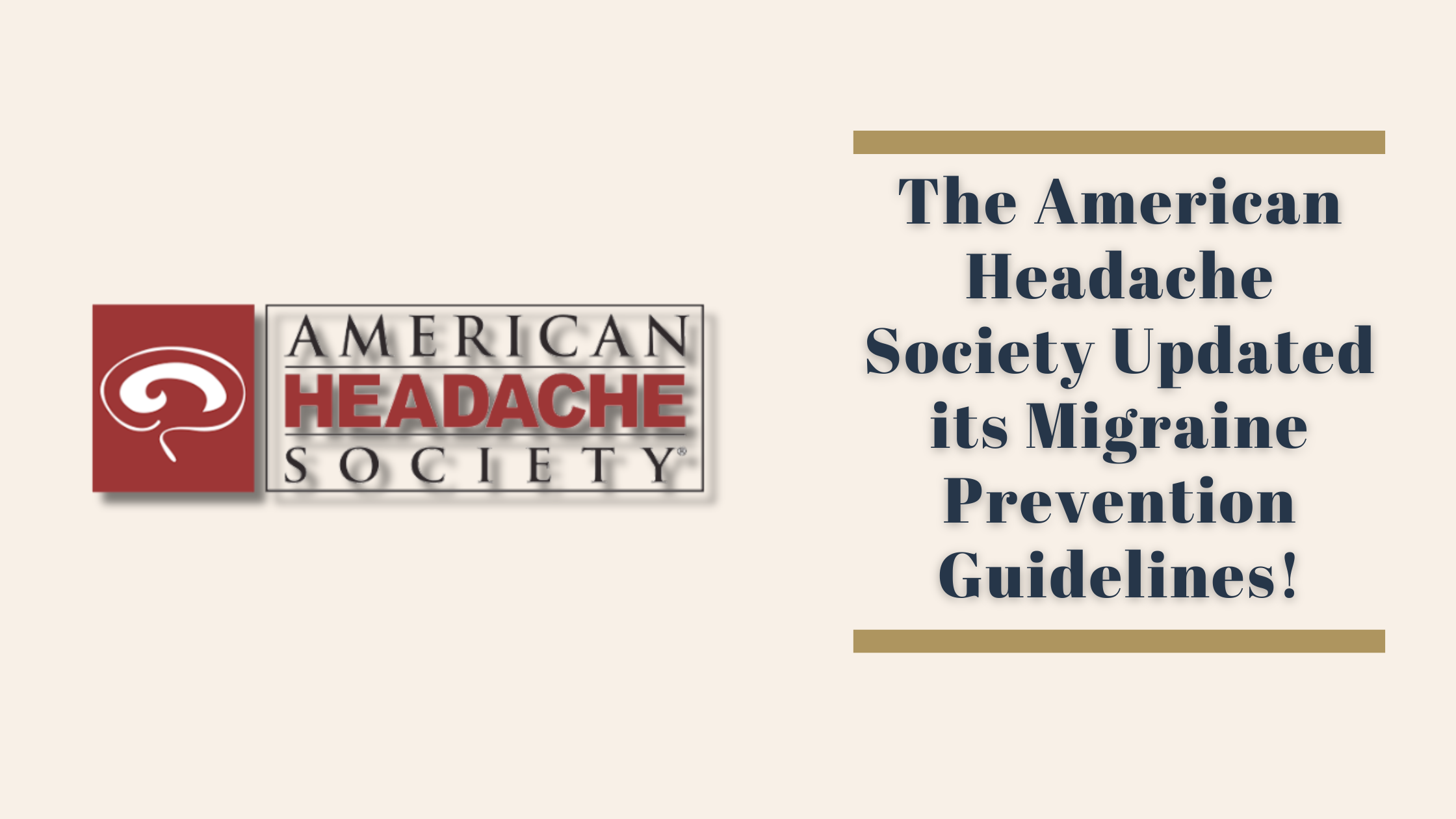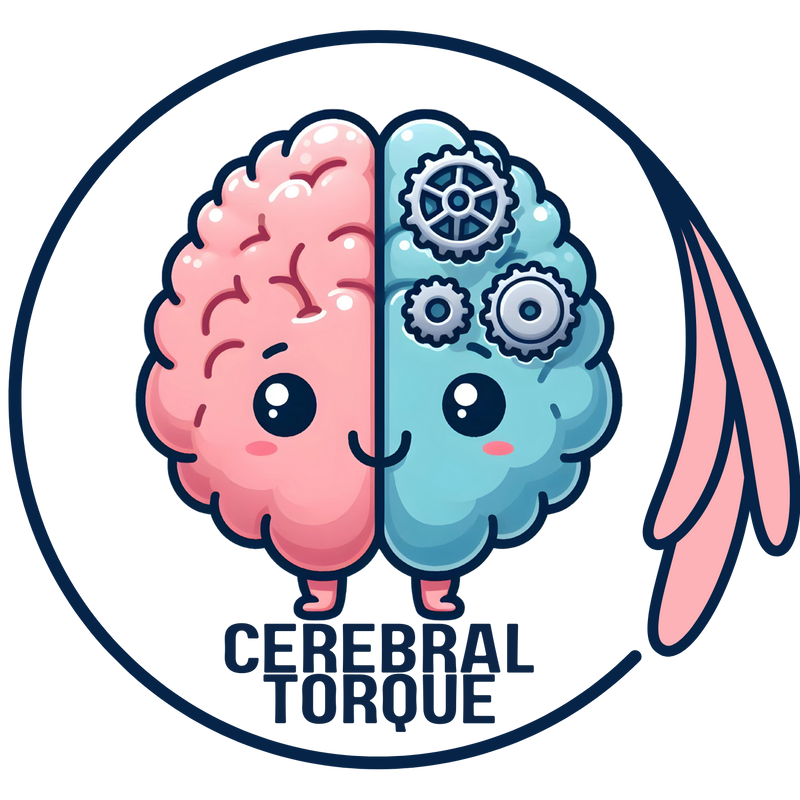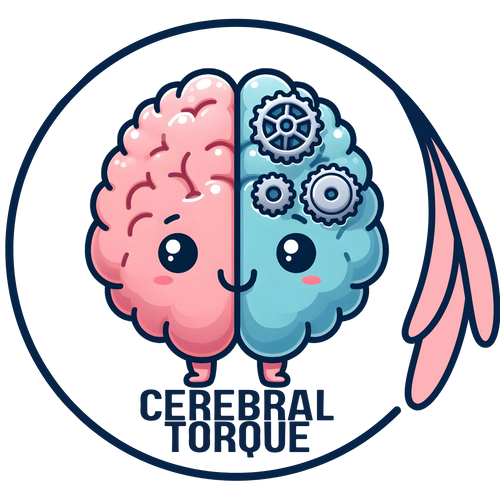The American Headache Society Updated its Migraine Prevention Guidelines!
Posted on March 12 2024,

The American Headache Society (AHS), a leading authority on headache treatment, has updated its guidelines to recommend that therapies targeting the calcitonin gene-related peptide (CGRP) can be used as a FIRST-LINE preventive treatment for migraine - both the episodic (under 15 headache days per month) and chronic (15 or more headache days per month) forms.
All I have to say is…finally.
What are CGRP therapies and why are they better?
CGRP is a protein that has been shown to play a key role in generating migraine headaches and their associated symptoms like nausea, light sensitivity, and pain. The new anti-CGRP drugs work by blocking either the CGRP protein itself or its receptor through antibodies or small molecule drugs. These medications are the first preventives specifically made for migraine disease, unlike older drugs that were originally approved for other conditions like seizures, depression, or hypertension.

According to the AHS statement, the evidence from clinical trials and real-world studies shows that anti-CGRP therapies are more effective at reducing the frequency of migraine attacks and associated disability compared to previous preventive medications like topiramate, propranolol, and amitriptyline. The CGRP inhibitors can cut the number of migraine days by 50% or more for many patients.
Moreover, the anti-CGRP drugs are well tolerated with fewer and less severe side effects like fatigue, injection site reactions, or constipation. In contrast, older migraine preventives have more severe side effects like cognitive impairment, weight gain, and insomnia that make them difficult to take long-term. Patients are, therefore, much more likely to maintain compliance with anti-CGRP drugs as a result.
Real-world relief for hard-to-treat migraine
The AHS statement also noted that CGRP therapies can provide relief even when multiple other preventive medications have failed. They cited both randomized trials and real-world observational studies showing anti-CGRP therapies can work for these difficult-to-treat cases when other preventives could not.
In particular, the anti-CGRP antibody therapies like erenumab, fremanezumab and galcanezumab as well as the oral CGRP receptor antagonists like rimegepant and atogepant demonstrated efficacy in patients who had failed two or more previous preventive medication classes.
Removing barriers to better care
With such robust and consistent evidence for the benefits of CGRP inhibitors, the AHS states that there is no need for patients to fail multiple older preventive medications before trying an anti-CGRP therapy. This removes a major barrier that delayed many patients from accessing these preventive treatments. Health insurance companies previously required step therapy where patients had to try and fail multiple older, cheaper drugs first before approving coverage of the newer anti-CGRP therapies.
The AHS also emphasizes that issues like higher drug costs and lack of data in certain populations like children and adolescents should not preclude early use of anti-CGRP preventives. Delaying effective migraine prevention can lead to chronification, medication adaptation headache, and increased disability and health care costs. Early intervention with the best available preventive treatments is critical.
A new era of migraine prevention
The CGRP inhibitor therapies represent a monumental advance in migraine treatment compared to previous repurposed medications. With this updated position statement, the AHS has firmly endorsed them as a legitimate first-line option for preventing migraine attacks. We are entering a new era of migraine prevention with these innovative, migraine-specific therapies.
Source: https://headachejournal.onlinelibrary.wiley.com/doi/10.1111/head.14692
Sat, Dec 20, 25
Eptinezumab (Vyepti) Desensitization Protocol
First-ever eptinezumab (Vyepti) desensitization protocol for migraine patients with hypersensitivity reactions. 10-step hospital-based approach proven safe and effective.
Read MoreWed, Dec 17, 25
Migraine Management During Pregnancy, Breastfeeding, and Pregnancy Planning
This guide provides comprehensive, evidence-based recommendations for migraine management throughout the reproductive journey.
Read MoreMon, Nov 17, 25
Migraine Research - During the week of my absence.
Migraine Research - During the week of my absence. The Association Between Insomnia and Migraine Disability and Quality of Life This study examined how insomnia severity relates to migraine disability...
Read More


